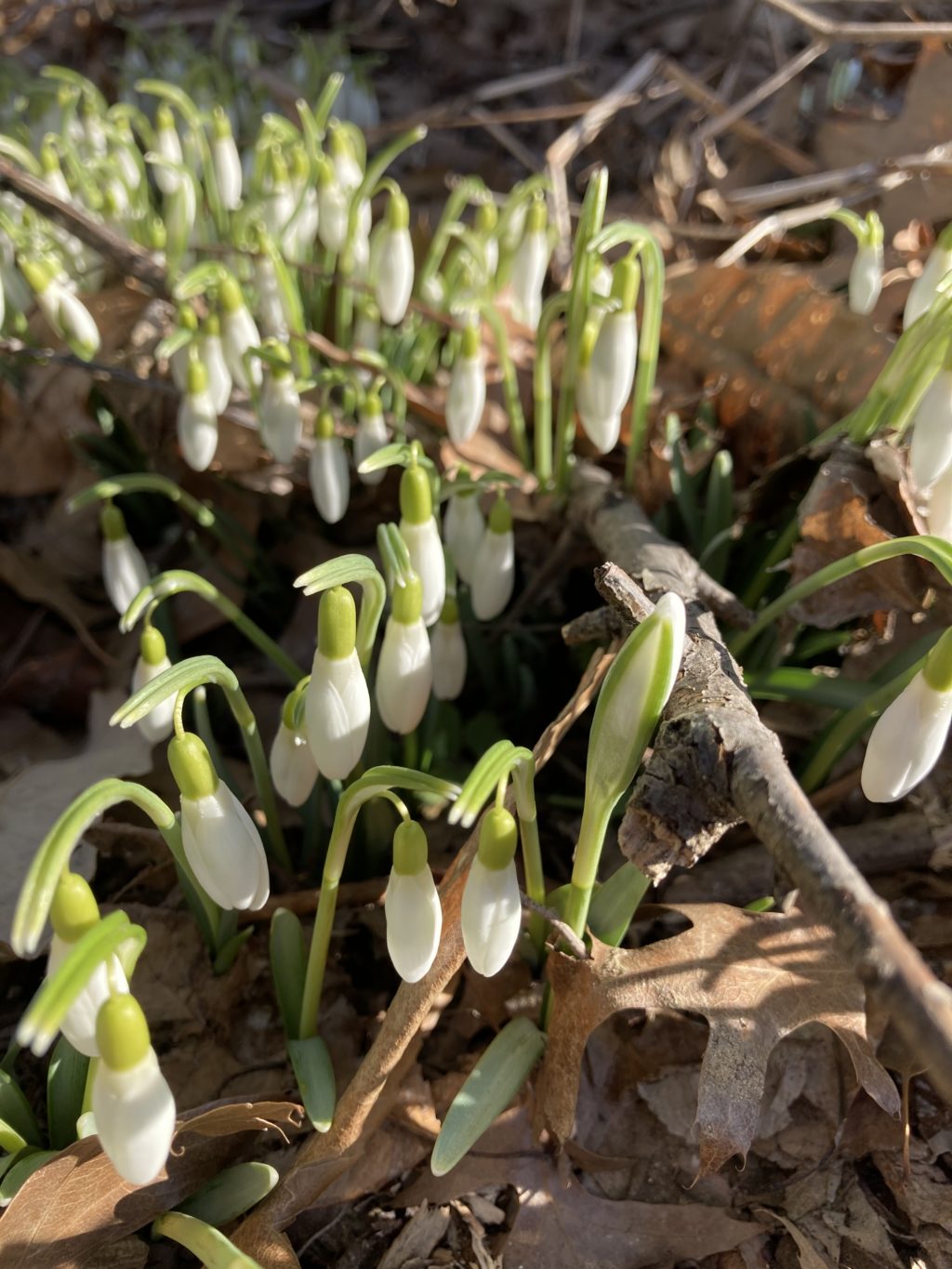Almanac: Galanthophilia

Snowdrops. Photo: Stephen Braun
Spring has barely begun, but by the time you read this it will be autumn for the plant that is typically first to bloom around here: snow drops. I spotted my first snowdrops a week ago on a walk around Sunset Farm, the agricultural oasis a stone’s throw from downtown Amherst. It was cold and snow still lingered in shady spots, so the sight of dozens of beautiful white flowers nodding on slender green stems was delightful.
The patch of snowdrops I saw was not adjacent to any building, which is where these plants are typically found because they are an introduced species, being originally from Europe and Southwest Asia. But snowdrops are very hardy, spread easily, and have thus “escaped” many of the locations in which they were first planted. There are more than 20 species of Galanthus, the genus to which our common snowdrop, G. nivalis, belongs. In Europe people have been cross-breeding G. nivalis and other species for centuries and hundreds of varieties now exist, which are bought, sold, and traded by “galanthophiles.”
Snowdrops live fast and die young. They emerge, bloom, fruit, and die within the span of a few weeks, fading to autumnal senescence just as the rest of the living world is revving up in vernal splendor. If you find some still blooming, take a close look at the flowers. The three large pure white outer petals enclose three smaller petals, each marked with a green “V” at their tips. (In researching this article I learned a new word: “tepal.” That’s the technical name for snowdrop “petals” because the six flower parts are neither true petals nor the typically greenish and unremarkable sepals that form the outermost parts of most flowers.)
How these tender plants grow and bloom when temperatures frequently fall far below freezing is still not entirely understood. I have read that snowdrops share a trait that has been extensively studied in skunk cabbage: thermogenesis. Like snowdrops, skunk cabbage flowers very early in spring — in fact it’s probably flowering now. The flowers are inconspicuous, however, looking like dark brown/purple hoods or chubby spikes emerging from mud or soggy soil.
But skunk cabbage flowers can heat up to 59 degrees F even when the ambient temperature is far below freezing. They use as much metabolic energy as a small rodent or a hummingbird, so I think it’s fair to call these amazing plants “warm blooded.” The research on skunk cabbage thermoregulation is robust, but I could not find original research confirming whether snowdrops can actually accomplish this feat. It certainly makes sense that they would, but I could only find casual or un-referenced mentions in the articles I read. (If any of you gentle readers know more, please comment below!)
A final bit of snowdrop trivia: the bulbs were found, in 1956, to contain a substance called galantamine, which has since been synthesized and is sold for its alleged properties of cognitive enhancement. Galantamine blocks an enzyme that normally breaks down the neurotransmitter acetylcholine, so the net effect of galantamine is to increase levels of this key excitatory neurotransmitter. Whether ingesting galantamine actually improves one’s thinking or slows the decline of dementia is another (and complicated) story, but it’s a reminder of how compounds originally found in plants can have potentially useful properties for humans.
Almanac is a regular Indy column of observations, musings, and occasional harangues related to the woods, waters, mountains, and skies of the Pioneer Valley. Stephen Braun has a background in natural resources conservation, which mostly means he is continually baffled by what he sees on explorations of local natural areas. Please feel free to comment on posts and add your own experiences or observations. You can also email at: braun.writer@gmail.com.

Warm-blooded flowers and galantamine — I learn something cool every week!!!
And thanks for the geographic link Sunset Farm: one of the few Amherst oases I’ve yet to explore….
Glad you enjoyed it Rob! Yes…nature’s just full of surprises! And Sunset Farm is worth a visit…no crops yet, but good eggs for sale!